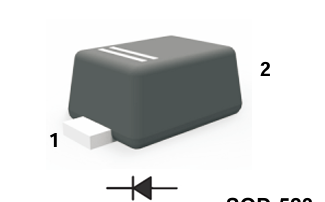Date:2025-06-03 Categories:Product knowledge Hits:331 From:Guangdong Youfeng Microelectronics Co., Ltd
Circuit Design Tips switching diodes
Series Resistance: In forward-biased applications, connect a current-limiting resistor in series with the diode to restrict the forward current within the safe IF range. Calculate the resistor value using Ohm's law: R = (Vsupply - Vforward) / IF.
Heat Dissipation: If the diode is expected to carry significant current or operate in a high-temperature environment, ensure proper heat dissipation. This may involve using a larger package, adding a heat sink, or optimizing the circuit layout for better airflow. switching diodes
Layout Considerations: In high-speed circuits, keep the diode's leads as short as possible to minimize parasitic inductance, which can affect switching speed and cause signal reflections. Place the diode close to the components it is protecting or interacting with to reduce signal delays. switching diodes
Testing and Troubleshooting
Visual Inspection: Before installing the diode, check for any physical damage to the package, such as cracks or burns. Ensure the polarity is correct, as installing a diode in reverse can lead to circuit failure or damage. switching diodes
Multimeter Testing: Use a digital multimeter in the diode test mode to check the forward voltage drop. A healthy silicon switching diode should show a voltage drop of around 0.6V to 0.7V in the forward direction and no conduction in the reverse direction (except for a very small leakage current, which may not be detectable with a basic multimeter).
Circuit Testing: After installing the diode in the circuit, monitor its temperature during operation. If the diode becomes excessively hot to the touch, it may be carrying too much current or the reverse voltage is too high, indicating a need to re-evaluate the circuit design or select a more suitable diode.
By following these guidelines, you can effectively utilize switching diodes in various electronic circuits, ensuring reliable operation and optimal performance. Always refer to the specific datasheet of the switching diode model you are using for detailed electrical characteristics and application notes, as parameters can vary between different manufacturers and part numbers. switching diodes

Previous: Classification, Structure, and Principle of MOSFET